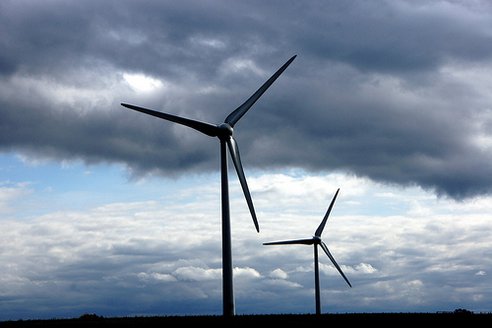
In a few places, wind power is already as cheap as natural gas or coal-fired electricity. By and large, however, it’s still a bit more expensive in most regions ’round the world. But not for long.
Climate Progress points us to this report in Bloomberg New Energy Finance, which has the scoop: “The cost of electricity from onshore wind turbines will drop 12% in the next five years thanks to a mix of lower-cost equipment and gains in output efficiency.”
And that 12% drop will have huge implications, as Bloomberg reports: “The best wind farms in the world already produce power as economically as coal, gas and nuclear generators; the average wind farm will be fully competitive by 2016.”
This means that wind power will hit grid parity pretty much everywhere in just a handful of years — which is really encouraging news for clean energy advocates. The two factors that have led to the plummeting cost of installing and operating wind power are a) improvements in technology that have increased generation capacity — read: bigger, more efficient, more aerodynamic turbines. And b) an estimated 7% “experience curve”; Bloomberg has determined that costs have dropped 7% every time the worldwide wind power capacity has doubled. And since we started with 0.3 GW in 1984, and will now have 240 GW by the end of the year, that’s a whole lot of cost reduction.
The moral of this story is clear: there is nothing more important in the quest for cleaner energy than getting it out in the world. Far too many of the opinion-makers in Washington and beyond constantly condemn the entire clean energy sector for not yet being “ready”. Wind and solar need more research; more investment, more time before we try to deploy them to scale, they say. It’s an ultra-common argument. It’s also wrong.
We need, more than anything, aggressive policies that will get wind farms on the ground, solar panels on rooftops, and arrays in the deserts. We need a price on carbon, more consistent tax breaks for clean energy, and feed-in tariff schemes. The more we get clean power sources out there, the more efficient the relevant supply chains and infrastructure (both physical and political) will become. Competition will drive improvements in technology, and costs will come down as the industry heats up. To be sure, we should continue funding R&D and incubating promising technologies. But as we can see with the story of wind power, there’s no substitute for deployment.
(Source)
 Follow
Follow